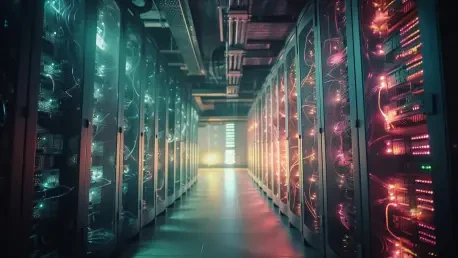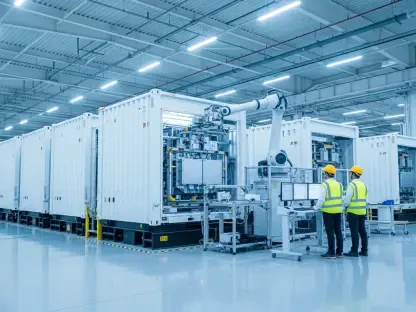In today’s dynamic energy landscape, the integration of innovative energy storage solutions into data center infrastructure is gaining significant traction. To delve deeper into this transformative trend, we are joined by Christopher Hailstone, a seasoned expert in energy management, renewable energy, and grid reliability. With his extensive experience, Christopher will shed light on the pivotal role of flow batteries, the challenges data centers face in energy sourcing, and the future of energy storage technologies.
What are flow batteries, and why haven’t they caught on until recently?
Flow batteries have been around for some time, yet they haven’t been widely adopted until recently. These batteries store energy in liquid electrolytes contained in large tanks, allowing for scalability and long-duration energy supply without significant degradation over time. Their delayed adoption can be attributed to historically higher costs and limited use cases that fully exploited their unique benefits. However, as costs have come down and the need for reliable, large-scale energy solutions has surged, flow batteries are finally getting the attention they deserve.
Can you explain the advantages that flow batteries offer over traditional lithium-ion batteries for data centers?
Flow batteries present several advantages over lithium-ion batteries, especially for data centers. They excel in large-scale energy storage applications due to their ability to provide long-duration storage with minimal degradation over many charge-discharge cycles. This makes them highly suitable for data centers that have unpredictable power demands. Moreover, flow batteries offer a safer alternative, as they are less prone to overheating or catching fire, which is a significant concern with lithium-ion technology.
What specific characteristics of XL Batteries’ organic flow batteries make them appealing to data centers like Prometheus Hyperscale?
XL Batteries’ organic flow batteries are particularly attractive to data centers because they address some of the critical needs of such facilities. They offer rapid response to power demand fluctuations, are non-flammable, and provide a reliable, scalable energy solution. These characteristics are important for data centers like Prometheus Hyperscale, which require stable and safe power solutions to manage the dynamic loads of AI and cloud computing applications.
What are the expected benefits of implementing XL Batteries’ pilot project at Prometheus Hyperscale’s data center?
The pilot project at Prometheus Hyperscale aims to demonstrate the efficacy of flow batteries in a demanding data center environment. Expected benefits include enhanced energy security through reliable power supply, reduced reliance on grid power, and increased operational efficiency. If successful, this pilot could pave the way for larger-scale deployments, helping data centers to future-proof their infrastructure and support sustainability goals.
How is the project at Prometheus Hyperscale designed to meet the unique power demands of AI-focused data centers?
AI-focused data centers often face sudden and significant load fluctuations that require a robust and flexible power infrastructure. The flow battery project at Prometheus Hyperscale is tailored to respond to these unique demands by providing a seamless transition between different power states, thanks to the rapid charge and discharge capabilities of flow batteries. This ensures that the center can maintain consistent performance without interruptions.
What role do permitting and interconnection barriers play in the energy storage decisions of data centers?
Permitting and interconnection barriers significantly impact energy storage decisions, as they can delay project timelines and increase costs. These obstacles encourage data centers to explore independent power solutions that bypass traditional grid requirements, like onsite energy storage systems, which can be deployed faster and with fewer regulatory challenges.
What challenges do data centers face when relying on the grid for power supply and interconnection?
Data centers relying on the grid often encounter issues like power instability and long lead times for grid connections. These centers require high reliability and cannot afford disruptions, making the grid’s inherent variability a major concern. Additionally, grid connections can be subject to lengthy permitting processes, which can delay the commissioning of new data centers.
What are the emerging energy storage alternatives gaining attention from data centers besides flow batteries?
Alongside flow batteries, technologies such as nickel-zinc batteries, supercapacitors, and compressed air energy storage are gaining interest. Nickel-zinc batteries offer high power density and safety, while supercapacitors provide quick bursts of power. Compressed air solutions promise long-duration storage capabilities, making them suitable for extended power backup scenarios.
Can you elaborate on the potential advantages of nickel-zinc batteries and supercapacitors for data centers?
Nickel-zinc batteries are valued for their high power density, reduced environmental impact, and improved safety over traditional battery chemistries. Supercapacitors, meanwhile, excel in delivering a large amount of power quickly, which can be beneficial in handling peak loads and providing immediate power backup in critical situations within data centers.
How does the interest of data centers in energy storage reflect an appetite for innovation?
Data centers are at the forefront of adopting cutting-edge technologies, demonstrating a strong appetite for innovation. This interest in novel energy storage solutions reflects their commitment to enhancing operational reliability, sustainability, and adaptability in an ever-evolving technological landscape. By integrating advanced energy storage, they not only future-proof their operations but also contribute to broader energy transformation goals.
When data centers opt for onsite energy storage, why do they prefer to eschew the grid?
Many data centers choose onsite energy storage to reduce dependence on grid infrastructure due to the need for uninterrupted power supply. Onsite systems allow for greater control over energy resources, improve reliability, and speed up the deployment process by avoiding grid-related delays, thereby bringing facilities online faster.
What is the significance of use-case driven decisions in selecting energy storage technologies for data centers?
Use-case driven decisions ensure that energy storage technologies align with specific operational needs, optimizing performance and cost-efficiency. For data centers, these decisions focus on fulfilling unique requirements such as high cycling frequencies, rapid response times, and integration with renewable energy sources, leading to more tailored and effective energy solutions.
How does the need for cycling frequency impact the cost and choice of energy storage technologies?
The frequency of cycling directly influences both the cost and choice of energy storage technologies. Frequent cycling requires technologies that can handle continuous use without degradation, impacting the long-term cost of ownership. Flow batteries, with their high cycle life, become more cost-effective in such scenarios, whereas technologies with shorter cycle lifespans may incur greater replacement and maintenance costs.
What are the challenges of deploying unproven energy storage technologies on a large scale in data centers?
Deploying unproven technologies at scale involves risks such as reliability concerns, unforeseen maintenance issues, and potential integration challenges. Data centers, sensitive to any disruption, are typically cautious and prefer tested solutions, which can slow down the adoption of innovative technologies until they are validated through pilot projects.
Can you describe the potential implications of limited manufacturing capacity if a certain technology gains popularity?
Should a new energy storage technology rapidly gain popularity, its limited manufacturing capacity could lead to supply shortages, delaying deployments and potentially increasing costs. This scenario underscores the importance of scaling up production capabilities in parallel with market demand to ensure a steady supply chain.
How does the hesitation by data centers to adopt new technologies impact the speed of innovation in the energy storage sector?
Caution among data centers can slow innovation, as manufacturers and developers may wait for more widespread acceptance before investing in new technologies. This hesitancy can create a bottleneck, postponing advancements until there is sufficient demand to justify scaling up production and deployment.
What lessons can other industries learn from the data center sector’s approach to energy storage and technology adoption?
Other industries can learn the importance of due diligence in technology adoption, balancing the promise of innovation with operational reliability. The data center sector’s methodical approach to testing and piloting new solutions can serve as a model for integrating advanced technologies while minimizing risk.
What future trends do you anticipate in the relationship between data centers and energy storage technologies?
Looking forward, I anticipate an increased emphasis on hybrid storage solutions that combine multiple technologies to meet diverse needs. There will likely be continued focus on advancing safety, sustainability, and cost-effectiveness, driving innovation and pushing the boundaries of existing energy storage capabilities.









